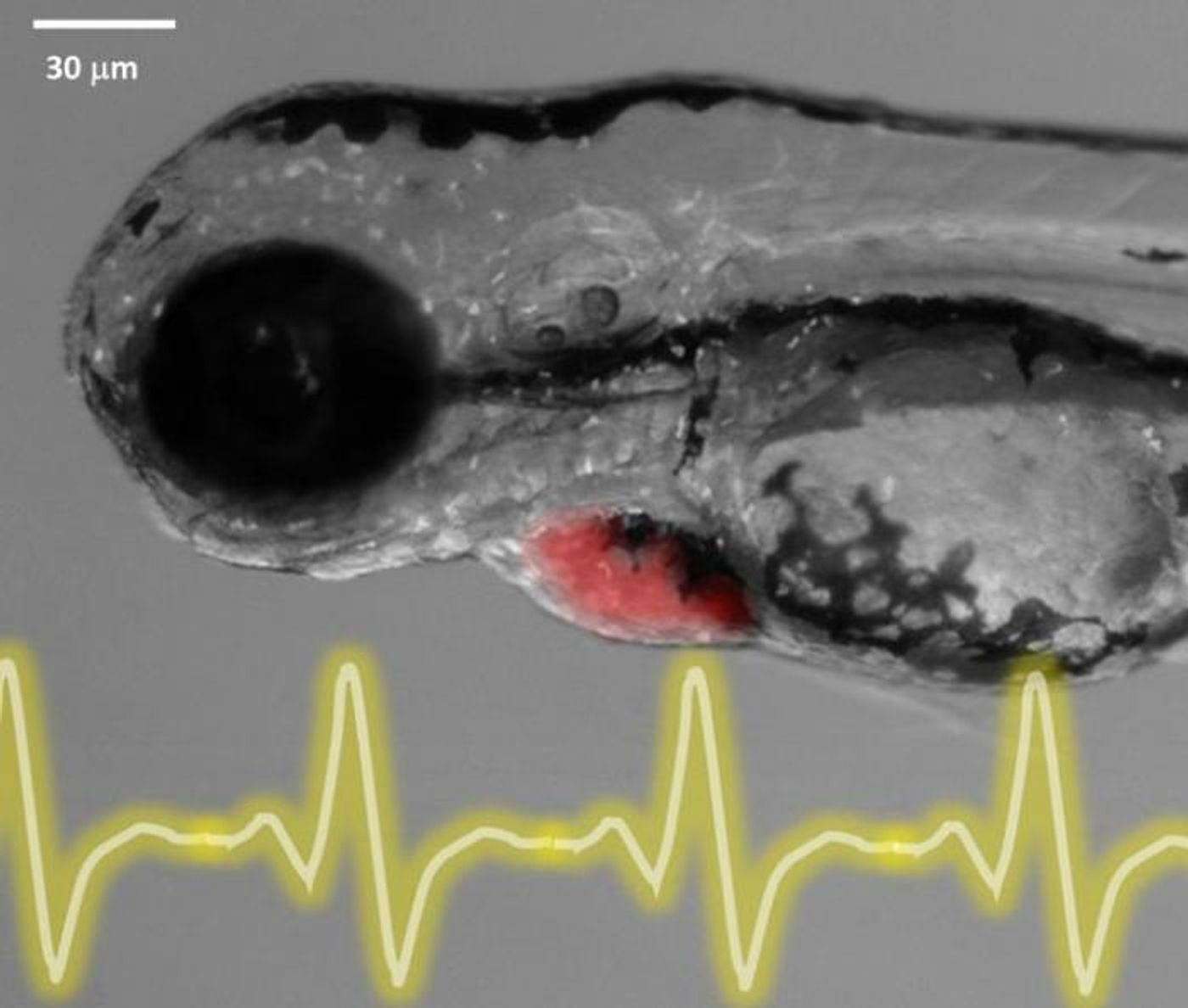From the University of Sussex, scientists have refined a sensing technology, making possible the detection and monitoring of full electrical activity of the heart in small organisms, like a developing embryo.
The
patented technology, called Electric Potential Sensing (EPS) technology, performs non-invasive measurement of heart signals. Since its creation, it has been used to conduct human electrocardiography (ECG) heart scans and electroencephalographs, its "cranial equivalent."
ECGs measure the heart beat, but EPS technology is capable of recording full electrical activity of the heart, and without using electrodes. By redefining their technology to be applicable to much smaller hearts, scientists from the University of Sussex have the opportunity to see heart abnormalities in developing embryos detected earlier than ever before.

Zebrafish embryo ECG 3 days post-fertilization
Image Credit: Dr. Elizabeth Rendon-Morales
Their study, published in
Applied Physics Letters last week, described the highly sensitive heart sensors as able to "detect electrical signals of zebrafish embryos just three days after fertilization." Zebrafish hearts are 2500 times smaller than the average adult human heart, although they are structurally very similar. This refined technology can thus be uniquely useful to analyze and monitor cardiac activity in embryos early in development.
University of Sussex scientist and head of the Sensor Technology Research Center called the refined technology "safe to use" in pending human embryo clinical tests. If successful and approved, this technology could locate the origin of certain heart abnormalities that develop in utero like congenital cardiac arrhythmia and
QT syndrome, heart disturbances that affect about 8 in 1000 children (
Heart.org).
Watch the following video from Sussex Innovation to see how EPS technology is used to detect brain signals in addition to heart rhythms.
Source:
University of Sussex









